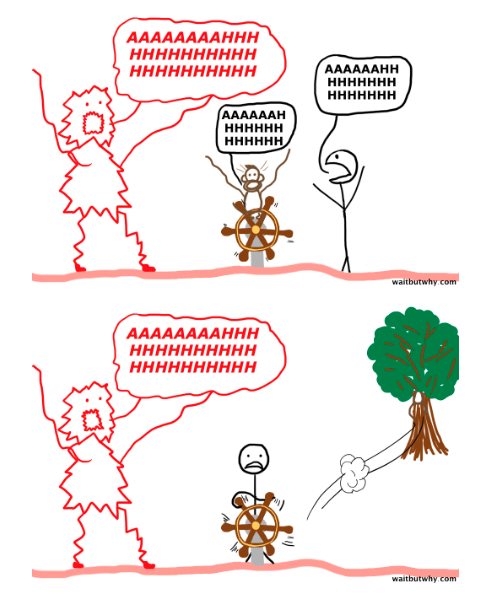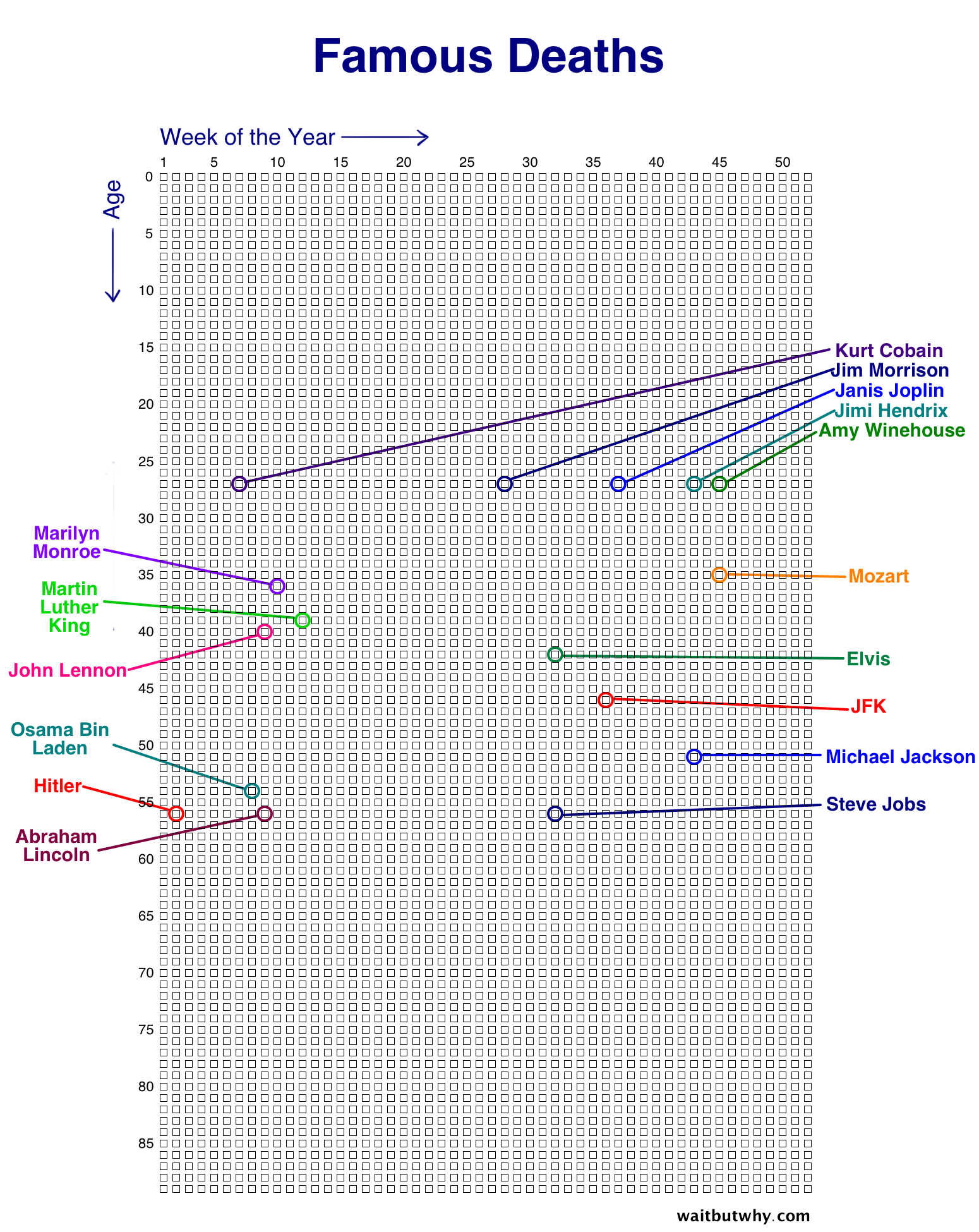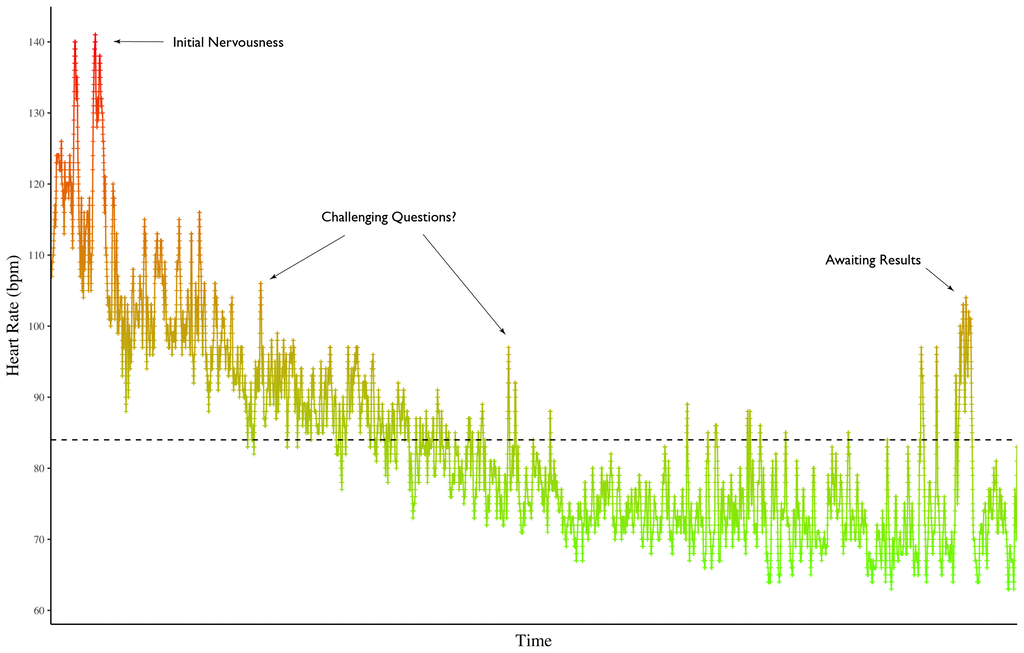Motivating yourself to be productive. Disclaimer-Monsters Involved
So let’s say you go to class and your professor gives you a new assignment due in a month. If you are anything like me, you just go home, carry on with your life as normal until 28 days from now. That is when you “remember” that you have a paper due in 2 days. If you can relate with what I am describing then I’m sure that when this happened for the 100th time, during one of your all-nighters you promised yourself never let this happen again (Until the next paper due of course). But how can we really break this loop of misery and under accomplishment? Is there a way around it? To properly answer this we first need to understand how the mind of a procrastinator works and how is it different from a “rational” person mind.
This question was neatly answered by Tim Urban in a Ted talk video. The basic idea behind it, is that the brain of a non-procrastinator has a RATIONAL DECISION MAKER who determines actions, based on reason, whereas the brain of a procrastinator has another two tenants: an INSTANT GRATIFICATION MONKEY who likes easy and fun stuff an a PANIC MONSTER that is almost never around (this creature is similar to some of your classmates whom you only see during exams). In a procrastinators brain when the rational decision maker suggests that this is the perfect time to start your paper, the monkey takes over and suggests to check whether Chloe is back with Scot and 5 hours later you are watching a video on YouTube on how ants communicate. Congratulations you had a 5-hour long play in the Dark Playground (the place where leisure activities happen when they should not be happening). How was it? Let me guess, The “fun” your experience was not really fun because it was filled with guilt and self-hatred feelings as it was not earned. This goes on and on, until 2 days before the deadline when Panic Monster appears, whom the monkey is terrified of. The monkey leaves and then the rational decision maker takes over and finally you do the work pulling all-nighters (again).

On a positive note, however, when hard deadlines exist (such as paper due on a specific date) the effects of procrastination are contained because eventually, the panic monster takes over. Yes, you may be underachieving in life relative to your true potential but you are not failing so bad you can not recover. But if you are a PhD student or an entrepreneur, generally there are no hard deadlines (until the very end) because it seems nothing is happening at first and the effects of procrastination extend outwards. They become a source of long-term unhappiness and regrets. You end up becoming a spectator in your life so what do you do? Well, Tim Urban suggests a variation of the “Memento Mori/ Remember death” technique used by ancient Romans. He suggests you introduce a state of panic in your life by realizing every day how short life is and how fast it passes us by so that the fear of death overcomes your fear of failure and you force yourself into action (see picture below for an overview). Here is the post explaining more about your life in weeks

Although I found this technique effective at first, it eventually wears off. The reason why that this is happening is because this technique is a bit vague and does not trigger enough the emotional aspect of things. Eventually, it becomes a filling boxes chore. So what is my solution to this? I create deadlines/experiences that do not exist and make them as real as possible by living them in my mind using a variation of the NLP technique. If you are anything like me you are eventually motivated to work by fear of failure so for example if I need to work on my PhD thesis now that is really 6 months from now and the monkey in my mind is asking for fun and easy stuff Ihave a trigger like the picture below that is the actual heart rate of a person during his/her PhD viva.

I create this experience in my mind and live it. I think about the room 1.2, its hot and I’m wearing my suit, I open the door and my heart is raising. I am living in my mind every point on the graph above. Guess what happens next. Yes, the Panic Monster is back and the monkey is gone. In this scenario, the graph above is my anchor, my trigger that will initiate all the bad feelings that will summon the Panic monster. (In a future post I will explain how I automate this process because starting is always the hardest part). What is great with this technique is that you can adjust the technique to whatever way you want, and you can create a positive trigger i.e a picture of Lamborghini (where you feel the air on your hair as you drive, listen to the sweet sound of the engine and smell of the leather) or a negative feelings anchor like a picture of a person in his a deathbed, regretting all the dreams he did not follow being in his place and feeling all the frustration of a life never lived.
As a final note
If you have any sense you will want at the end of the day to be in a better place than the start, otherwise, its a day wasted. The way you do this is by setting realistic targets every day. Often people avoid to do this because they do not want to specify conditions of failure because failure is painful but if you don’t do that then you will be failing all the time.
